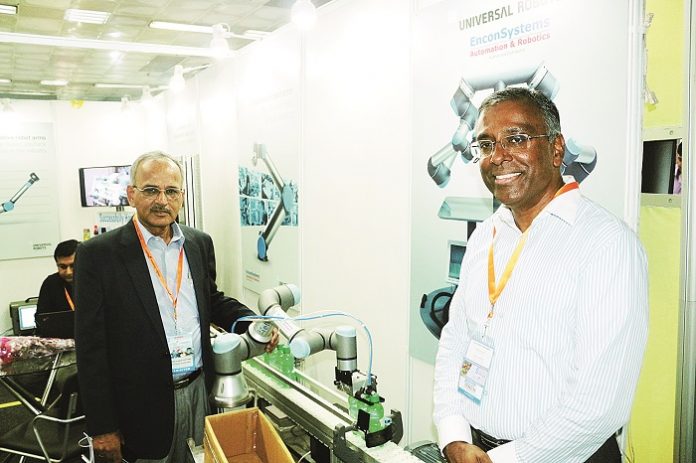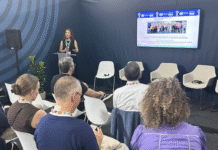
Universal Robots (UR) is a fairly new company founded in 2005 and has brought in a brand new technology called Collaborative robots or co-bots meaning a man and a robot working together and they are totally different from standard traditional robots. UR has been around for only about seven to eight years now and this is a growing industry worldwide.
Traditional robots have a safety cage around them. These co-bots are different and are called forced limited robots. ISO TS 15066 which was released on 15 February 2016 – in development for almost five years – is an international standard that allows a human and a robot to come in contact and also identifies and defines pain threshold in various parts of the body. Till now, with traditional industrial robots, a human and a robot could not come in contact because of safety hazards. UR co-bots meet all these criteria. They have about 30 safety patents, where a human being and a robot can work completely side by side, subject to application risk assessments.
Pradeep David, general manager, Universal Robots India says, “We believe that co-bots have a huge potential and multi model applicability in India. UR co-bots are not replacing labour. They are emphasizing on the point that humans do not waste their time doing dumb, dirty, repetitive and unsafe tasks that have so much strain and instead, concentrate on tasks that require more intelligence. This is the fourth industrial revolution and the market has a huge growth potential in India.”
“In the packaging industry there are plenty of opportunities for our co-bots such as transferring, rejecting, loading, unloading, sealing, handling, collating and other operations that are made possible with this technology. An example of such an application is in packing eggs, femcare products, shampoos, creams amongst others. The only limitation is that they can handle up to only 10 kilograms of payload at the moment,” says David.
Naresh Kantoor, MD of Encon Systems and sales partner to Universal Robots in India says, “UR co-bots make a huge difference because of the fact that they are not heavy, consume less power, are flexible and can be easily mounted on a ceiling or wall or on a floor. People are using UR robots for various applications other than packaging applications. For example, it is being used to make Dosa and omelets in Singapore, in the breakfast buffet, collaborating with a machine and it is turning in the product faster with greater quality.”
“UR has over 9000 co-bots installed now worldwide of which 200 co-bots are installed in India. We can manufacture 30,000 co-bots in a year and the delivery time is very short. The machine has no AMC cost involved and the power consumption or running costs are negligible compared to traditional industrial robots,” David concludes.











